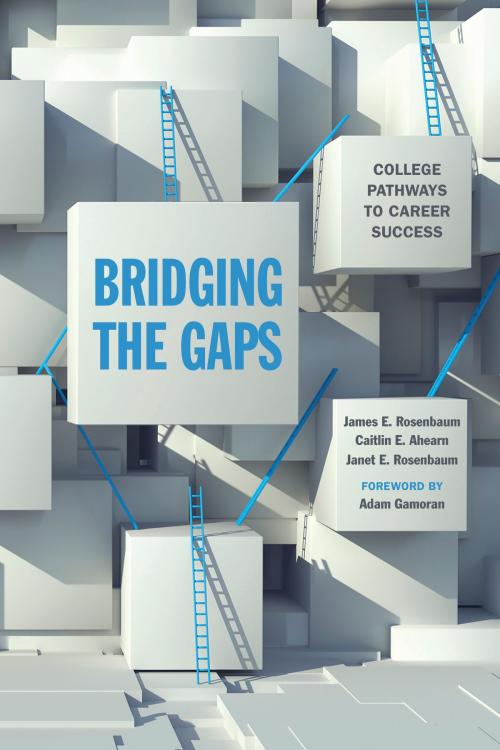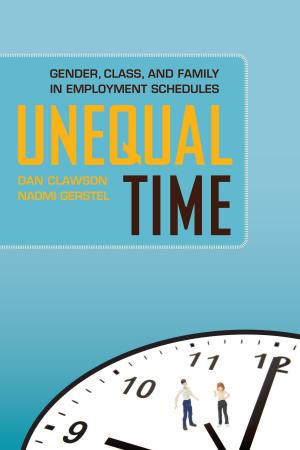Bridging the Gaps
College Pathways to Career Success
Nonfiction, Reference & Language, Education & Teaching, Educational Theory, Educational Reform, Higher Education| Author: | James E. Rosenbaum, Caitlin E. Ahearn, Janet E. Rosenbaum, Janet Rosenbaum | ISBN: | 9781610448680 |
| Publisher: | Russell Sage Foundation | Publication: | September 2, 2017 |
| Imprint: | Russell Sage Foundation | Language: | English |
| Author: | James E. Rosenbaum, Caitlin E. Ahearn, Janet E. Rosenbaum, Janet Rosenbaum |
| ISBN: | 9781610448680 |
| Publisher: | Russell Sage Foundation |
| Publication: | September 2, 2017 |
| Imprint: | Russell Sage Foundation |
| Language: | English |
College-for-all has become the new American dream. Most high school students today express a desire to attend college, and 90% of on-time high school graduates enroll in higher education in the eight years following high school. Yet, degree completion rates remain low for non-traditional students—students who are older, low-income, or have poor academic achievement—even at community colleges that endeavor to serve them. What can colleges do to reduce dropouts? In Bridging the Gaps, education scholars James Rosenbaum, Caitlin Ahearn, and Janet Rosenbaum argue that when institutions focus only on bachelor’s degrees and traditional college procedures, they ignore other pathways to educational and career success. Using multiple longitudinal studies, the authors evaluate the shortcomings and successes of community colleges and investigate how these institutions can promote alternatives to BAs and traditional college procedures to increase graduation rates and improve job payoffs.
The authors find that sub-baccalaureate credentials—associate degrees and college certificates—can improve employment outcomes. Young adults who complete these credentials have higher employment rates, earnings, autonomy, career opportunities, and job satisfaction than those who enroll but do not complete credentials. Sub-BA credentials can be completed at community college in less time than bachelor’s degrees, making them an affordable option for many low-income students.
Bridging the Gaps shows that when community colleges overemphasize bachelor’s degrees, they tend to funnel resources into remedial programs, and try to get low-performing students on track for a BA. Yet, remedial programs have inconsistent success rates and can create unrealistic expectations, leading struggling students to drop out before completing any degree. The authors show that colleges can devise procedures that reduce remedial placements and help students discover unseen abilities, attain valued credentials, get good jobs, and progress on degree ladders to higher credentials.
To turn college-for-all into a reality, community college students must be aware of their multiple credential and career options. Bridging the Gaps shows how colleges can create new pathways for non-traditional students to achieve success in their schooling and careers.
College-for-all has become the new American dream. Most high school students today express a desire to attend college, and 90% of on-time high school graduates enroll in higher education in the eight years following high school. Yet, degree completion rates remain low for non-traditional students—students who are older, low-income, or have poor academic achievement—even at community colleges that endeavor to serve them. What can colleges do to reduce dropouts? In Bridging the Gaps, education scholars James Rosenbaum, Caitlin Ahearn, and Janet Rosenbaum argue that when institutions focus only on bachelor’s degrees and traditional college procedures, they ignore other pathways to educational and career success. Using multiple longitudinal studies, the authors evaluate the shortcomings and successes of community colleges and investigate how these institutions can promote alternatives to BAs and traditional college procedures to increase graduation rates and improve job payoffs.
The authors find that sub-baccalaureate credentials—associate degrees and college certificates—can improve employment outcomes. Young adults who complete these credentials have higher employment rates, earnings, autonomy, career opportunities, and job satisfaction than those who enroll but do not complete credentials. Sub-BA credentials can be completed at community college in less time than bachelor’s degrees, making them an affordable option for many low-income students.
Bridging the Gaps shows that when community colleges overemphasize bachelor’s degrees, they tend to funnel resources into remedial programs, and try to get low-performing students on track for a BA. Yet, remedial programs have inconsistent success rates and can create unrealistic expectations, leading struggling students to drop out before completing any degree. The authors show that colleges can devise procedures that reduce remedial placements and help students discover unseen abilities, attain valued credentials, get good jobs, and progress on degree ladders to higher credentials.
To turn college-for-all into a reality, community college students must be aware of their multiple credential and career options. Bridging the Gaps shows how colleges can create new pathways for non-traditional students to achieve success in their schooling and careers.















